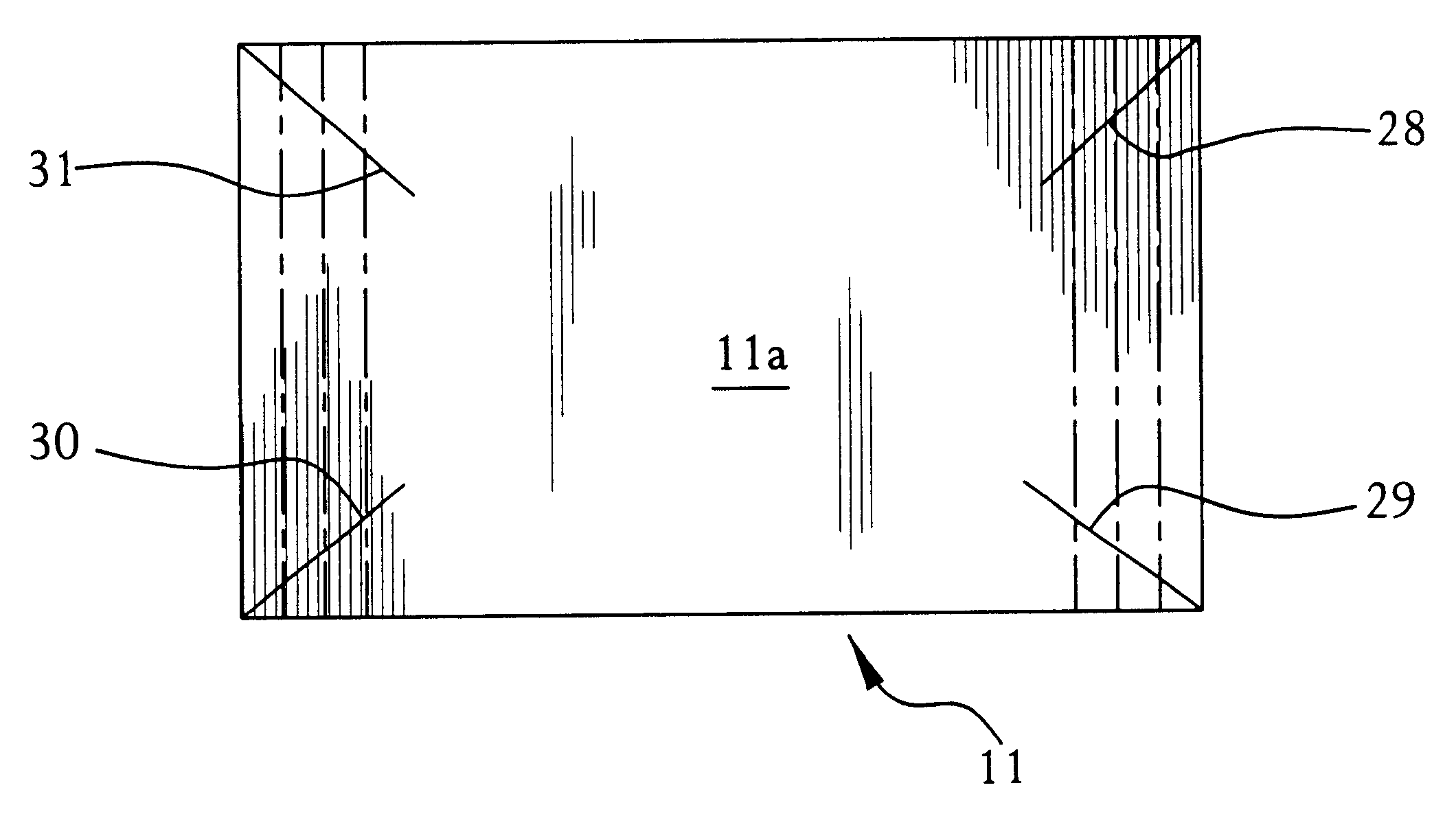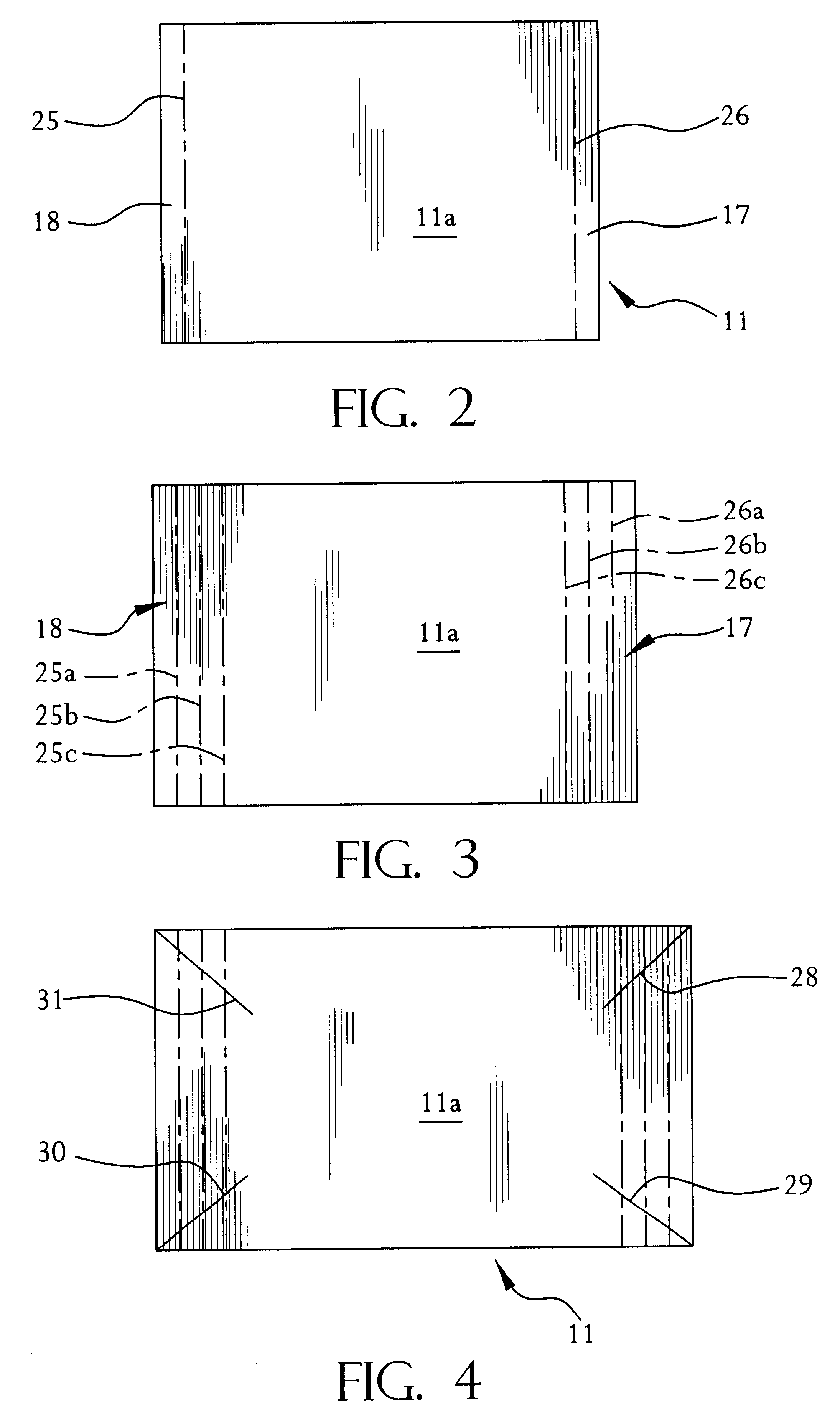Liner for container
a container and body technology, applied in the field of body lines, can solve the problems of prohibitively expensive to convert existing containers to this configuration, unfavorable container liners, and inability to meet the needs of shipping containers, etc., and achieve the effects of reducing cleaning and fit-out costs, simple fitting, and little training
- Summary
- Abstract
- Description
- Claims
- Application Information
AI Technical Summary
Benefits of technology
Problems solved by technology
Method used
Image
Examples
Embodiment Construction
FIG. 1 shows a schematic diagram in accordance with the present invention. The liner 10 includes an end panel 11, a first side wall panel 12, a second side wall panel 13, a floor panel 14, a roof panel 15 and a second end panel 16.
End panel 11 includes flaps 17, 18. End panel 12 includes top flap 19 and a lower flap (not shown). Side wall panel 13 includes similar top and lower flaps to side wall panel 12. Floor panel 14 includes a first flap 20 and a second flap 21. Roof panel 15 includes flap 22 and another flap (not shown) on the edge opposed to the edge carrying flap 22. Second end panel 16 includes flap 23 and another flap (not shown) on the opposed edge to that carrying flap 23.
The general configuration of the panels are shown in FIG. 2, which is an end view of end panel 11. As can be seen, end panel 11 includes a main body panel 11a having a first flat 18 and a second flat 17 provided on opposed edges thereof. Panel 11 is manufactured from double faced corrugated paperboard. ...
PUM
 Login to View More
Login to View More Abstract
Description
Claims
Application Information
 Login to View More
Login to View More - R&D
- Intellectual Property
- Life Sciences
- Materials
- Tech Scout
- Unparalleled Data Quality
- Higher Quality Content
- 60% Fewer Hallucinations
Browse by: Latest US Patents, China's latest patents, Technical Efficacy Thesaurus, Application Domain, Technology Topic, Popular Technical Reports.
© 2025 PatSnap. All rights reserved.Legal|Privacy policy|Modern Slavery Act Transparency Statement|Sitemap|About US| Contact US: help@patsnap.com



